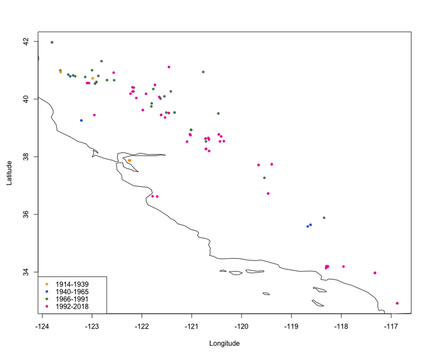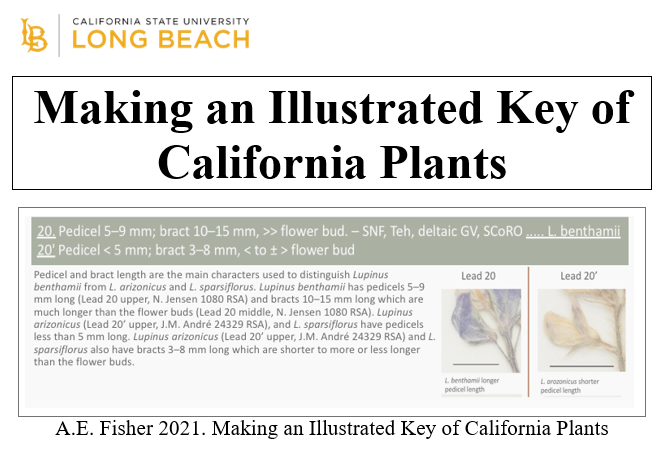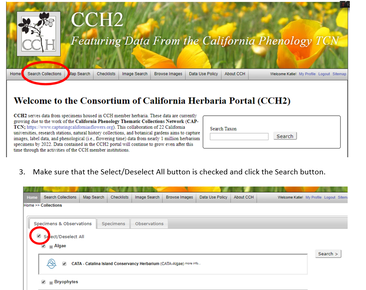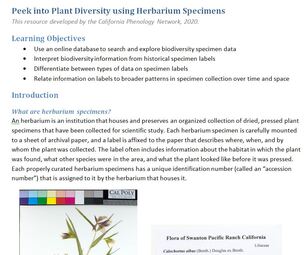Herbarium-Related Educational Exercises Developed by the CAP Network
Mapping California Plants with CCH2Author: Lua Lopez, CSU San Bernardino
The purpose of this exercise is to create a map showing the location of records compiled in the database. In addition, the points in the map will be colored based on time intervals to identify range expansions or range contractions. This exercise can be used in class to help students understand the colonization process of invasive species (lag phase, exponential growth, points of introduction, etc.). It can also be used to help students understand range contractions of endangered species over time. |
Making an Illustrated Key of California PlantsThis is a lab exercise developed by Amanda Fisher at CSU Long Beach. Students completing this activity will be able to:
|
Exploring Herbarium Specimens OnlineThis quick 45 minute lab exercise, homework assignment, or extra credit assignment introduces herbarium specimens and how they are used for research. Students think critically about herbarium specimens by searching an online database, CCH2, and examining the specimen data and images.
This lab/exercise is appropriate for undergraduate or advanced high school students. |
Peek into Plant Diversity using Herbarium Specimens (Online!)This 2-hour lab exercise introduces herbarium specimens and how they are used for research. Students contribute to specimen "digitization" using the citizen science platform Notes from Nature, and they work with the California specimen database, CCH2.
This lab/exercise is appropriate for undergraduate or advanced high school students. |
An Introduction to Biodiversity Databases and Specimen ImagesIn this module, students will be introduced to some biodiversity data resources and how to search for and download herbarium specimen images. They will be asked to think critically about the strengths and utility of these data resources.
|
Other Herbarium-Related Educational Exercises
|
Specimen Stories by Lena Struwe
Struwe, L. 2018-onwards. Botany Depot. https://botanydepot.com
This teaching module uses the often hidden information about a plant, a place, and a person connected through a herbarium specimen and how students can investigate it.
|
Making a plant press with what you’ve got
by Tobias Policha Struwe, L. 2018-onwards. Botany Depot. https://botanydepot.com
This short manual guides students in creating their own plant press with materials they already have. Several examples are included.
|
Collections Education Project
|
This website walks the instructor and student through a field-to-collections project in which students collect and identify specimens, make iNaturalist observations, and prepare their own specimen labels in a collection database.
|
|
This Place You Call Home: The Flora of Your County
Kansas State University
These materials are an educational lesson aimed at the high school level that utilizes the Kansas State University Herbarium database to explore primary scientific data on plant specimens for counties within Kansas (adaptable to other areas).
|
Science IRL: Plant collecting and herbarium research
Produced in collaboration with the UC and Jepson Herbaria
|









